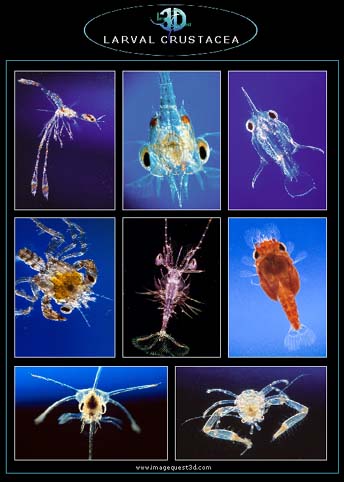
Note:Full text accompanies
each panel. Only a portion of this, the introduction, is shown below.
|
The marine relatives of woodlice, hoglice and water
fleas comprise the majority of the huge group called Crustacea.
They include crabs, prawns, lobsters and lice. Nearly all have beautiful
and bizarre youngsters or larvae and amongst their numbers are very
colourful, very mechanical-looking and often elaborately advanced
designs. Spines, hooks, spurs and whiskers are commonplace – some
used for defence, others for prey capture, others for locomotion,
aerating gills or wafting currents of food-laden water past their
mouths. All have well-developed compound eyes – a bit like an insect
but not quite so elaborate. Many have head and shoulders fused together
into a very strong cephalothorax. These are the bulldozers of the
plankton community and these tough outer cases have remained efficient
protective devices on their kith and kin since before Cambrian times
(600,000,000 years ago).
|
|




